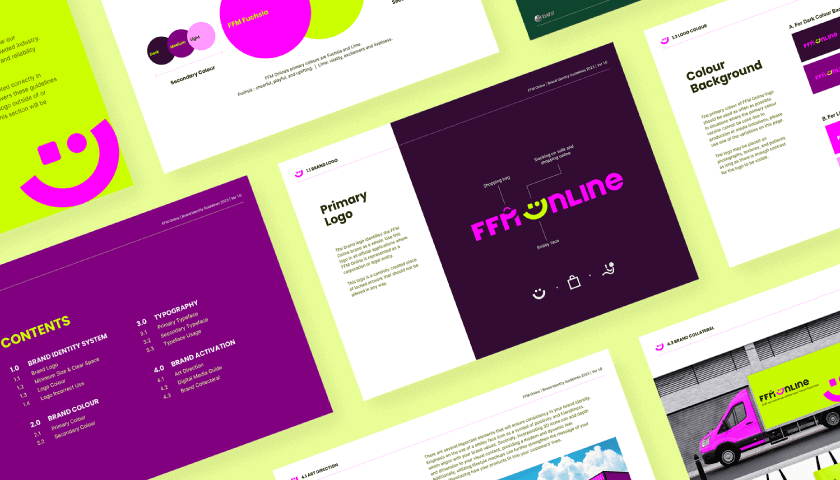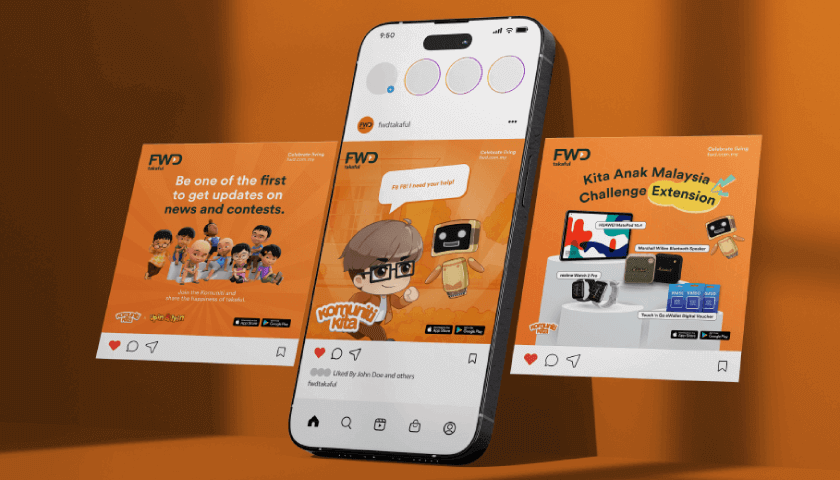The best web design course in Malaysia for 2026 teaches essential skills like HTML, CSS, JavaScript, and WordPress through practical, hands-on learning. These courses typically last from a few weeks to a few months and are offered both online and in-person by top institutions such as Artify and Next Academy. They are designed for beginners and professionals aiming to build responsive, SEO-friendly websites with industry-recognized certification upon completion.
Hey! So you’re thinking about starting a career in web design?
Or maybe you want to finally build websites that don’t just look good, but actually work and bring results.
Perfect timing, because Malaysia’s digital scene is buzzing, and knowing web design has never been more valuable.
So, let’s talk about what the best web design course in Malaysia for 2026 actually looks like.
Imagine learning essential skills like HTML, CSS, JavaScript, and WordPress in a hands-on, practical way, so you’re not just watching tutorials, you’re actually building websites from day one.
These courses usually run anywhere from a few weeks to a few months, and you’ll find both online and in-person options from top institutions like Artify and Next Academy.
The cool part? They’re designed for everyone, whether you’re a total beginner or already in the field but want to sharpen your skills.
At the end, you don’t just walk away with knowledge, you walk away with an industry-recognized certification that proves you can build responsive, SEO-friendly websites that deliver results.
So if you’ve been wondering whether to take the plunge, 2026 is the perfect year to invest in yourself.
Table of Content:
- What Is a Web Design Course?
- What Exactly Will You Learn in a Web Design Course in Malaysia?
- Why Learning Web Design in Malaysia Might Be the Best Decision You Make This Year
- How Do You Pick the Right Web Design Course in Malaysia?
- How Long Does a Web Design Course in Malaysia Take (and How Much Will It Cost You)?
- Who Should Actually Sign Up for a Web Design Course in Malaysia?
- How to Get Started with Your Web Design Journey
What Is a Web Design Course?

A web design course in Malaysia is basically your shortcut to learning how to build websites that don’t just “exist,” but actually work.
Think of it as a crash course in turning your creative ideas into functional, clickable, scrollable realities.
You’ll learn both the art (making a site look stunning) and the science (making sure it loads fast, works on mobile, and shows up on Google).
And let’s be real, why is this such a big deal in Malaysia right now?
Because everything is online.
From the nasi lemak stall owner in Penang who wants more GrabFood orders, to the multi-million-ringgit eCommerce giant in KL, they all need websites.
And not just any website, but one that stands out in a crowded digital world.
Understanding why website design is important is crucial for anyone looking to succeed in today’s digital landscape.
A well-designed website isn’t just about aesthetics, it’s about creating an experience that converts visitors into customers.
What Exactly Will You Learn in a Web Design Course in Malaysia?

You’re not just going to sit in front of boring slides and theory notes.
A proper web design course in Malaysia is hands-on. You’ll be coding, designing, and problem-solving from day one.
Let me break it down in plain language, because nobody likes reading a boring syllabus.
Here’s what you’ll master:
🖥 HTML (The Skeleton)
Think of HTML as the bones of a website. Without it, your site won’t stand.
You’ll learn how to structure web pages properly so search engines and users can understand your content.
🎨 CSS (The Styling)
CSS is where the magic happens, it’s the clothes, the makeup, the overall look.
Want a sleek corporate site or a funky, colorful landing page? CSS is your best friend.
You’ll discover how to make your site responsive (aka mobile-friendly), so it looks good on every device from your mom’s old iPad to the latest iPhone.
⚡ JavaScript (The Brain)
Static websites are boring. JavaScript gives your site life, think pop-ups, smooth animations, interactive menus.
Even if you’re not aiming to be a hardcore coder, learning JS basics is a game-changer for modern web design.

🎯 UI/UX Design Basics
Ever landed on a website that looked pretty but made you want to scream because you couldn’t find the “Contact” button? That’s bad UX.
In Malaysia’s best courses, you’ll learn user interface (UI) and user experience (UX) principles, so your websites don’t just look good, but also feel good to use.
🌍 WordPress (The Power Tool)
WordPress powers more than 40% of websites worldwide, including big brands and small businesses in Malaysia.
You’ll learn how to build WordPress sites, customize themes, and even set up eCommerce stores with WooCommerce.
🔍 SEO (Your Secret Weapon)
What’s the point of a beautiful website if no one can find it? That’s where search engine optimization (SEO) comes in.
A proper web design course in Malaysia will show you how to structure your site, write content, and optimize speed so your site climbs the Google ranks.

The Different Ways to Learn Web Design in Malaysia
Now, not everyone learns the same way.
Some of us love face-to-face classes, while others prefer learning in pajamas with coffee at 11 PM.
Luckily, web design courses in Malaysia cater to both.
- Online Courses → Flexible, great for working adults, usually cheaper.
- In-Person Classes → Hands-on support, instant feedback, plus networking with your classmates (hello future collaborations).
- Short-Term Bootcamps → Fast, intense, and career-focused. Perfect if you want to switch jobs quickly.
- Diploma/Long-Term Programs → Comprehensive, often include internships, ideal if you’re serious about going deep.
Why Learning Web Design in Malaysia Might Be the Best Decision You Make This Year
In Malaysia today, knowing web design isn’t just a skill, it’s like holding a golden key that unlocks multiple doors.
💼 Career Opportunities are Everywhere
Malaysia’s tech and eCommerce industries are growing like crazy.
From big corporate giants in KL to local cafes in Penang, everyone wants a professional website.
They’re all willing to pay good money for someone who can do it right.


Here are some roles waiting for you after you take a proper web design course in Malaysia:
- Web Designer (RM 3,500 – RM 4,800/month)
- Front-End Developer (RM 5,000 – RM 7,500/month)
- UI/UX Designer (RM 4,850 – RM 7,350/month)
- Freelance Web Developer (RM 50 – RM 200/hour)
Not bad, right?

🌍 Freelancing & Global Clients
The beauty of web design is this: you’re not tied to Malaysia only.
Once you master the skill, you can take on clients from Singapore, the US, Europe… basically anywhere.
A laptop and internet connection can literally build you a career.

🏢 Power Up Your Own Business
Not everyone takes a web design course in Malaysia to become an employee.
Many business owners join because they’re sick of paying agencies for every tiny website update.
Imagine being able to design, edit, and optimize your own website whenever you want.
That’s cost savings + creative freedom rolled into one.
✨ It’s a Creative Yet Practical Skill
Some careers sound exciting on paper but don’t actually give you creative satisfaction.
Web design hits that sweet spot: it’s logical (coding, structure) but also artistic (colors, typography, layouts).
If you’re the type who loves both problem-solving and aesthetics, this is the perfect path.

📈 High Demand, Low Competition (for Quality Work)
Here’s a little secret: yes, there are many “web designers” in Malaysia… but not all of them are good.
Businesses are tired of cookie-cutter templates and outdated designs.
If you come in with modern, professional skills from a legit course, you’ll instantly stand out and attract better clients.
How Do You Pick the Right Web Design Course in Malaysia?
Okay, here’s the tricky part. If you search “web design course in Malaysia” on Google, you’ll see a ton of options.

But not every course is worth your time (or your money).
Some are outdated, some only touch the surface, and some make big promises but give you nothing more than theory.
You don’t want to end up frustrated halfway through.
So, here’s what you should look at before you commit:
📝 Course Content
A proper course in 2026 shouldn’t just stop at HTML and CSS. It must include:
- Responsive design (mobile-first is non-negotiable now)
- JavaScript basics (and maybe some frameworks)
- UI/UX principles
- WordPress (because so many businesses still rely on it)
- SEO integration (a website that no one finds is useless)
Basically, you need both the creative and the technical side covered.
⏳ Duration That Matches Your Lifestyle
Are you a working professional? Maybe you’ll prefer part-time evening or weekend classes.
Want to switch careers fast? Then an intensive bootcamp is your best bet.
The key is: choose a course that matches your available time and commitment, otherwise you’ll burn out.
💰 Fees vs Value
Don’t just look at the price tag. A cheap RM 500 course might sound good… until you realize it only teaches outdated templates.
A more premium RM 8,000 course with industry projects, mentorship, and job placement could actually give you a much better ROI.
Always compare the value, not just the cost.

🎓 Certification & Credibility
In Malaysia, many employers still value certification.
Make sure the course you pick is recognized, and ideally, that you leave with a portfolio of actual projects.
Paper is good, but proof of skill is even better.
👩🏫 Instructor Expertise
This one is super important.
Who’s teaching you? Are they just trainers, or are they real industry practitioners?
A good mentor will share not only skills, but also shortcuts, mistakes to avoid, and insider tips you can’t Google.
Where to Learn Web Design in Malaysia (Pick Your Learning Style)
There’s no “one size fits all” when it comes to web design courses.
The right choice depends on how you like to learn, how much time you have, and how serious you are about turning this into a career.

🚀 Online Short Courses & Bootcamps
These are intensive, guided programs (usually live or cohort-based) that push you to complete real projects in weeks.
- Next Academy — Popular for coding bootcamps. They go heavy on hands-on practice and career outcomes, so you’re job-ready fast.
🎓 University & College Programs
If you want the full academic route (and a certificate that looks good on paper), you can go with a university degree or diploma in Multimedia, IT, or Digital Design.
- Expect 2–4 years of study.
- You’ll cover more than just web design (animation, programming, marketing, etc.).
- Perfect for those who want depth + credibility, but it’s a longer commitment.
🌐 Self-Paced Online Learning
This is the most flexible option, learn anytime, anywhere, at your own pace.
- Artify (by Jumix) — A Malaysian-made web design course tailored for beginners and business owners here. The modules are pre-recorded, so you can binge-learn over the weekend or take it slow after work. Unlike random YouTube videos, Artify actually guides you step-by-step, and you’ll finish with a practical website you can show off.

- Global Platforms (Udemy, Coursera, Skillshare) — Thousands of options, usually very affordable. The challenge? You’re on your own, and not all courses are updated for Malaysia’s market needs.
The point is: don’t rush. Take time to compare, read reviews, and even sit in a trial class if possible.
The “best web design course in Malaysia” for someone else might not be the best for you.

How Long Does a Web Design Course in Malaysia Take (and How Much Will It Cost You)?
This is usually the first question people ask me.
It depends on how deep you want to go.

🚀 Short-Term Courses (2–6 Weeks)
Perfect if you’re a business owner who just wants to know enough to manage your own site, tweak layouts, or understand what your web designer is talking about.
- Duration: 2–6 weeks
- Fees: RM500 – RM2,000
- Best for: Business owners, marketers, or beginners who want a “taste test” of web design.
🎯 Medium-Term Programs (2–4 Months)
This is the sweet spot for most learners in Malaysia.
You’ll cover the fundamentals (HTML, CSS, JavaScript, WordPress) plus dive into design, UX, and SEO.
By the end, you can actually build and launch complete websites.
- Duration: 2–4 months
- Fees: RM2,000 – RM8,000
- Best for: Beginners who are serious about pivoting into web design or freelancing.
🎓 Long-Term Diplomas (2–3 Years)
If you’re aiming for academic depth (like what universities offer), diploma programs give you the whole package: coding, design, group projects, even internships.
But it’s a bigger time and financial commitment.
- Duration: 2-3 years
- Fees: RM8,000 – RM50,000 (sometimes per year if it’s a degree or diploma)
- Best for: Students who want a recognized qualification and maybe a pathway into tech jobs via internships.
| Institution / Platform | Course Name | Duration | Approx Fees (RM) | Notes |
| Artify | Landing Page Web Design | Flexible (own pace) | RM997 | Local, practical, focused on business websites |
| Next Academy | Full-Stack Web Development Bootcamp | 10 weeks (full-time) | RM12,879 | Hands-on coding bootcamp, job-ready skills |
| HELP University | Diploma in Information Technology | 2 years | RM46,600 | Includes IT + web foundations |
| TAR UMT | Diploma in Multimedia Design | 2 Years 4 months | RM20,200 | Structured for digital media skills including web design |
| Coursera / Udemy | Web Design & Development Courses | Flexible (own pace) | RM100 – RM500 per course | Great for supplementing skills, but less local context |
| YouTube | Various creators (e.g. Traversy Media, FreeCodeCamp) | Flexible (own pace) | Free | Huge library, but no structured syllabus or certification |
Who Should Actually Sign Up for a Web Design Course in Malaysia?
Not every course is for everyone, but if you see yourself in one of these groups, then a web design course in Malaysia could be the career (or life) upgrade you’re looking for.

🌱 Beginners Who Want a Fresh Start
Maybe you’re stuck in a job that doesn’t excite you anymore. Or maybe you’re fresh out of school and wondering, “What now?”
A web design course gives you the chance to learn a skill that’s in-demand, creative, and pays well.
And don’t worry if you’ve never touched a single line of code before, the best courses start from zero and build you up.
👩💻 Aspiring Web Designers & Developers
Already been dabbling with Canva, Wix, or WordPress templates?
That’s a good start, but a proper course levels you up with the skills to build websites from scratch, impress clients, and charge more for your work.
If you’re self-taught and feeling like there are gaps in your knowledge, this is how you fill them.
🏢 Business Owners & Entrepreneurs
In Malaysia, running a business without a website is like opening a shop in the middle of nowhere. People can’t find you.
A web design course gives you control. Instead of paying someone RM2,000 every time you want to update your site, you’ll know how to do it yourself.
You’ll also understand what makes a site convert, meaning more leads, more sales, and more repeat customers.
📈 Marketers Who Want an Edge
Marketing isn’t just about writing good copy or running ads anymore.
If you can design and launch landing pages, tweak SEO, and improve site performance, you instantly become way more valuable in your company (and in the job market).
Plus, imagine not having to wait three weeks for the IT team to “fix a button.” You’ll just fix it yourself in 10 minutes.
How to Get Started with Your Web Design Journey
So you’re ready to jump into web design? Nice.
But before you start smashing your keyboard like a pro coder in a hacker movie, let’s map out what this journey actually looks like.

Steps to Enroll in the Right Course
Step 1: Assess Where You’re At
Don’t worry, you don’t need to be a tech genius.
Start by checking out some free online quizzes or tutorials. This helps you figure out:
- Do you prefer learning through videos, hands-on projects, or reading?
- How much time can you realistically commit?
Step 2: Do Your Research
Not all courses are created equal. Some focus more on coding, others on design. So:
- Compare what each school is teaching.
- Read reviews from past students (real stories beat marketing copy any day).
- Jump into their free info sessions or webinars if available.

Step 3: Get Yourself Ready
This is where you set yourself up for success.
Create a cozy study spot, install the right tools/software, and maybe even join a few online design communities.
Trust me, it’s way more fun when you’re learning with others.
Step 4: Commit and Enroll
Once you’ve chosen your course, sign up and lock it in. Then, set some goals.
Example: “By Week 4, I want to be able to code my own landing page.”
A schedule that fits your lifestyle = less stress, more progress.

What to Expect During Your Course
Here’s a sneak peek at how most web design courses in Malaysia flow:
Week 1-2: Foundations First
You’ll start with HTML basics, simple design principles, and getting your development environment set up.
Don’t worry, it’s beginner-friendly.
Week 3-6: Building Skills
This is where it gets fun.
You’ll dive into CSS, learn layouts, explore JavaScript fundamentals, and figure out how to make websites look good on any device.
Week 7-10: Real-World Projects
Enough theory, now you’ll build actual websites.
Some courses even let you work on client case studies.
You’ll get feedback, tweak your work, and learn how to handle “the client wants this logo bigger” type of requests.

Week 11-12: Portfolio & Career Prep
Time to wrap things up with a solid portfolio.
You’ll polish your best work, prep your resume, and maybe even practice for interviews.
Because what’s the point of learning if you don’t show it off, right?
Post-Course Opportunities
So… what’s next after you graduate? Plenty.
Immediate Next Steps
Start small, apply for entry-level jobs, pick up freelance gigs, or even help friends and family with their websites.
The goal is to put your new skills into practice, fast.
Long-Term Career Growth
Over time, you can specialize in areas like e-commerce, mobile apps, or even UX strategy.
Or, if you’re the boss type, start your own design studio or agency.
Who knows? One day, you might be mentoring new designers.

Continuous Learning
Web design never stands still.
New trends, new tools, new vibes, there’s always something to learn.
Attend workshops, follow industry news, and keep connecting with other designers.
Growth is a marathon, not a sprint.
Wrapping It Up: Your Next Move
By now, you’ve seen how powerful a web design course in Malaysia can be for your career.
It’s not just about learning HTML, CSS, or WordPress, it’s about opening doors to new opportunities, whether that’s landing your first tech job, freelancing with international clients, or even launching your own agency.
The truth is, the digital economy isn’t slowing down.
Businesses in Malaysia (and beyond) are hungry for designers who can create websites that look amazing and actually convert.
That’s where you come in.
So if you’ve been sitting on the fence, thinking, “Should I really do this?”, the answer is yes.
Take that first step. Choose a course that matches your goals, commit to the journey, and watch how your skills (and confidence) grow week by week.
Remember: 2026 is just around the corner.
By then, you could still be scrolling through job ads wishing you had started… or you could already be building websites that people can’t stop talking about.
The choice is yours. And trust me, your future self will thank you for starting today.
Frequently Asked Questions
How long does it take to become proficient in web design? With dedicated study through a quality web design course in Malaysia, you can gain basic proficiency in 2-3 months. However, becoming truly skilled takes 6-12 months of consistent practice and real-world application.
Do I need a computer science background to succeed? Absolutely not. Many successful web designers come from diverse backgrounds including art, business, and liberal arts. The key is dedication to learning and practicing consistently.
What’s the job market like for web designers in Malaysia? The job market is excellent and growing. Malaysia’s digital economy expansion means high demand for skilled web designers, especially those who understand local market needs and can work with international standards.
Can I learn web design while working full-time? Yes, many institutions offer flexible schedules including evening classes, weekend programs, and online options. The key is choosing a program that fits your lifestyle and committing to consistent progress.
How much can I earn as a web designer in Malaysia? Entry-level web designers typically earn RM 2,500-4,000 monthly. With experience, senior designers can earn RM 6,000-12,000 monthly. Freelancers often charge RM 50-200 per hour depending on their expertise and client base. Understanding how much it costs to design a website in Malaysia helps you price your services competitively.
Should I focus on design or development skills? The most valuable professionals have both skills. Start with one that interests you more, then gradually add the other. Full-stack capabilities make you more employable and allow you to command higher rates.
Are online courses as effective as in-person training? Both formats can be highly effective. Online courses offer flexibility and often cost less, while in-person training provides direct interaction and networking opportunities. Choose based on your learning style and circumstances.
What software will I need for web design? Most courses provide software access during training. Eventually, you’ll want design tools like Adobe Creative Suite or Figma, code editors like VS Code, and various browsers for testing. Many excellent free alternatives exist for beginners.











Comments are closed for this article!